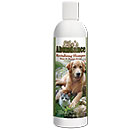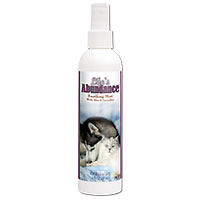Itching and Scratching the Winter Away
It’s that time when pets and humans are more vulnerable to each other than ever. Since this is the chilliest month of the year, animals are more likely to be cooped up in the house — and us with them! All of the windows and doors are closed to the world and the heat is blasting around the clock.
These kinds of conditions can make our winter homes playgrounds for various allergens. Our pets are vulnerable to the dust in the carpet, the mold inside the walls of your old house and other pets. On the other hand, warm moist times of the year or times when the seasons are shifting are also high allergy times. Our pets are hardly ever safe from them. Allergies are the most common conditions affecting cats and according to Kansas State University, fifteen percent of dogs suffer from common allergies like pollen, mold and house dust.
However, common allergies aren’t the only ones that affect our pets. Just like humans, pets can be allergic to anything from eggs to oak trees. Allergies are conditions that pets and humans share with equal intensity, so we must use our powers of empathy to make them as comfortable in their skin as possible. This month, the we will focus on pet allergies: what they are, what to look for and the different methods of GIVING RELIEF.
So What Are Allergies Anyway?
Essentially, an allergic reaction is the work of an overactive immune system. It’s when an animal responds abnormally to a seemingly everyday substance like grass or common food ingredients. Substances can cause an allergic reaction upon exposure by ingestion, inhalation or skin contact.
Allergic animals possess antibodies that react badly to specific allergens to produce what we know as allergic reactions. Watery eyes and constant scratching are common manifestations of the immune system in overdrive, overcompensating to expel the allergen from the body.
The Different Types of Allergies
Contact Allergy
Of the various types of allergies, contact allergies are the least common in both cats and dogs. Examples of contact allergens are flea collars, plants, grass and certain types of bedding such as wool. Because contact allergies result in a local reaction to the skin, symptoms include skin irritation and itching at the points of contact.
Inhalant Allergy

This is the most common allergy for cats and it is prevalent in dogs, as well. This type of allergy is caused by the hypersensitivity of the immune system to common environmental substances. Some of these allergens are with us seasonally (ragweed and grass pollens) and others, such as mold and mildew, are with us all the time. This type of allergy usually manifests in the form of severe, generalized itching. The itching may be most severe on the feet, flanks, groin and armpits. Inhalant allergies and food allergies are often the reasons for chronic ear infections in dogs.
Recent studies have shown that it can also affect the cat’s urinary tract resulting in crystal formation in the urine.
Flea Allergy

This is the most common form of canine allergy and it’s relatively common in cats, as well. The normal dog and cat experiences only minor irritation in lieu of a flea bite with minimal itching, if any. The flea-allergic dog or cat; however, suffers from severe itching when the flea’s saliva is integrated into the skin. It’s not the flea itself, but its saliva that is the culprit. Just one single bite can make a pet itch to the point of self-mutilation: chewing itself and removing large amounts of hair. Pets tend to chew mostly on and around the tail. The constant chewing makes them more vulnerable to bacterial infections, a complication which causes even more itching. This is a vicious cycle, indeed. This particular skin problem is fondly known in veterinary circles and among other pet professionals as flea bite dermatitis or FAD. A skin allergy test can be performed by a vet to determine if a dog is allergic to flea saliva.
Food Allergy

This is one of the hardest allergies to detect and probably even harder to treat. Pets, for the most part, aren’t born with food allergies. More often than not they, like humans, can and do develop a hypersensitivity to food they have been eating for years, which causes us to overlook the possibility of a food allergy. Cats tend to become allergic to their most common protein like tuna, while dogs can be allergic to proteins such as chicken, beef and the proteins in corn and wheat.
Food allergies manifest in a myriad of ways: itchy skin, licking of the feet (especially in dogs), shaking of the head, rubbing face on carpeting, coughing and rare digestive problems such as vomiting and diarrhea. They can also result in chronic ear infections in both dogs and cats.
In list form, below is an overview of the many allergic symptoms, some already discussed.
Common symptoms include:
- excessive licking under
the tail - chronic ear infections
- irritated skin with some
hair loss - licking front paws
- sores around the muzzle
and face rubbing - head shaking
Rare symptoms include:
- asthma like symptoms
- behavioral change
- seizures
Allergy Sleuths:
Detecting the Problem
If you detect any of the above symptoms in your pet’s behavior, make an appointment with your vet. Though itching, for instance, can be caused by a variety of different things, your vet can perform diagnostic tests to differentiate between causes of itching.
For more severe and complicated cases, your vet can refer you to a board certified dermatologist.
The first step in allergy treatment is pinpointing not only the type of allergy, but what your pet is allergic to. This is done several ways.
Skin test:
To perform a skin test, the vet shaves some parts of the animal’s body and injects specific allergens into the skin to see if the skin welts.
Blood test:
Just like in humans, the vet takes blood and tests it to determine the substance(s) the animal is/are allergic to.
Hypoallergenic Diet: Pets with non-seasonal allergies may be allergic to basic food ingredients. Treatment of food allergies can be a very complicated and time-consuming affair. The easiest way to determine which food ingredient your pet is having a reaction to is to feed a special food that contains ingredients the pet has never eaten. These special foods are available at veterinary offices. During this time, your pet can’t eat anything but this special food, so that means no table scraps, treats or bones. If the allergy symptoms go away after a few weeks (anywhere from 2 to 12), then you could start feeding your pet isolated foods that he was eating before to see if an offensive reaction occurs. Then, you’ll mostly likely find your culprit. Once your vet is able to determine your pet’s allergen, whether by a skin test, blood test or a hypoallergenic diet, you should then do everything to remove it from your pet’s diet. We’re not always so lucky, though. Sometimes, your pet may be allergic to things in the environment, which are often inescapable realities.
Methods of Treatment
Hypo sensitization, also known as the allergy shot, is a viable means of treatment. After determining exactly what your pet is allergic to, injections are prepared containing precise amounts of the offending allergen to be administered on a regular basis, allowing your pet to build up immunity to the allergen. Your pet will still be allergic but this will help it to live more comfortably in its surroundings.
Prescription drugs, such as steroids, should be used only as a last resort. Antihistamines also fall under this category. Prescription drugs can be quite well at controlling the symptoms though some should not be used for extended periods of time.
Omega-3 Fatty Acid
Formulas soothe from the inside out. University studies have shown their unequivocal benefits to our itchy pets
Things You Can Do At Home
When it comes to allergies, like most things it’s a matter of controlling, not curing. Once an animal’s body becomes hypersensitive to certain things, it is then eternally vulnerable to those things. Out of all the methods of treatment, the most common treatments are actually topical products such as shampoos and antihistamines. There are also supplements that you can give to your pets to help support the insides of their bodies, which to an extent determine the condition of the outside. Life’s Abundance Skin Care System is perfect for helping suffering pets cope with the various allergies that manifests in the skin. Let’s spread that HealthyPetNet love from the inside out!
A Delicious, Soothing Skin Supplement: Skin & Coat Formula for Dogs & Cats

Cornell Feline Health Center was one, if not the first, to demonstrate that inhalant allergies (mold, grass, weeds, carpeting,
etc), the most common allergies to affect cats, respond to omega-3 fatty acids. Omega-3 fatty acids, the essential oils prevalent mostly in fatty fish like salmon, herring and wild game, have been proven to soothe the skin. As we’ve learned, our animals’ allergies manifest mostly in the skin. All allergies aside, skin and coat problems are among the most frequent reasons we take pets to veterinarians. After all, a pet’s coat is the telltale sign of overall health. Our delicious beef-flavored Skin & Coat chewable tablets contain fish oils and vitamin E to promote healthy skin and a luxurious coat. The fish oil inherent in these capsules are much more concentrated than most of its kind, making it the choice of pet owners in the know.
Manufactured by a pharmaceutical plant that makes human products, the essential fatty acids are microencapsulated, a manufacturing process that allows higher amounts of the oil to be put into each tablet. These supplements are also special because they contain a dynamic combination of other oils and the ratio is one of our best kept secrets. This formula is used to perfect a dog or cat’s coat condition. Many breeders believe that these tablets should be given no matter how good the food you’re feeding. They seem to maximize beauty.
Skin & Coat Formula is also recommended for animals with excessive itching and scratching, because it soothes irritated skin from the inside out. Whether a pet is itching from allergy, dry winter heat or changing seasons, this formula aims to soothe. It’s great for pets that shed excessively, leaving the coat glossy, supple and healthy looking. If your pet’s coat is dappled with white flakes, you won’t need a special shampoo. Perhaps the best thing about Life’s Abundance Skin & Coat Formula is the great roast beef flavor that cats and dogs just love. No more battles with capsules and no more messy liquid oils! Wouldn’t it be great if we could chew a tablet daily and look great!
Bathe Your Pet with Herbal Blend Shampoo

Studies show that if we shampoo our pets’ coats regularly, it is less likely that foreign substances will enter through the skin. Regular bathing simply discourages allergens — irritants such as dander and dead hair. When our pets itch and injure their skin, it leaves their internal landscapes more vulnerable to skin problems. Our self-adjusting Herbal Blend Shampoo is formulated for both therapeutic and normal use, with both cleaning and conditioning action. It effectively removes dirt, while it sends nutritive soothing herbs deep in the skin.
Dr. Jane believes that a shampoo should do more then wash. Our shampoo supports healthy skin and healthy coats. When it’s all said and done, shinny full coats, healthy looking skin and a great fresh scent make it one of the most popular shampoos around. Lavender, marigold and aloe vera are just a few of the herbs that are responsible for this remarkable shampoo.
Whether our pets are scratching, biting or laying happily at our feet, Dr. Jane has managed to formulate a shampoo that does it all. Use Life’s Abundance Skin & Coat Formula in conjunction with Herbal Blend Shampoo and Soothing Mist for the optimal health of your pet’s skin and coat.
Use Soothing Mist on Problem Areas

Used in conjunction with the Skin & Coat Formula and the Herbal Blend Shampoo, you have a dynamic trio on your hands. Our Soothing Mist and Herbal Blend Shampoo work the outside while the Skin & Coat Formula works the inside. There is no better holistic union of skin care out there to promote the optimal health of your pet’s skin and coat. Our Soothing Mist provides the skin’s cells with proper nourishment to replenish themselves in the unending cycle of cell life present in the skin. When your pet is feeling itchy, spray the Soothing Mist for comfort and to discourage them from further damaging themselves with incessant scratching. Our Soothing Mist contributes ingredients that the skin needs for repair. The Soothing Mist has been nicknamed “magic.” We have to admit that it is magical how the aloe, zinc and many herbs soothe and condition the skin like they do.
Important Disclaimer: The stories and information on this site are not meant to diagnose or prescribe for you. If you or your pet has a medical problem, you should consult your medical doctor or veterinarian. The ideas and information on this site have not been endorsed or approved by the FDA. In no event shall the owners of this website be liable for any damages whatsoever resulting from any action arising in connection with the use of this information or its publication, including any action for infringement of copyright or defamation. The decision to use, or not to use, any information is the sole responsibility of the reader. Opinions expressed here are those of individual contributors. This web site does not verify or endorse the claims of contributing writers.
The statements above have not been evaluated by the Food and Drug Administration. This product(s) is not intended to diagnose, treat, cure, or prevent any disease.
